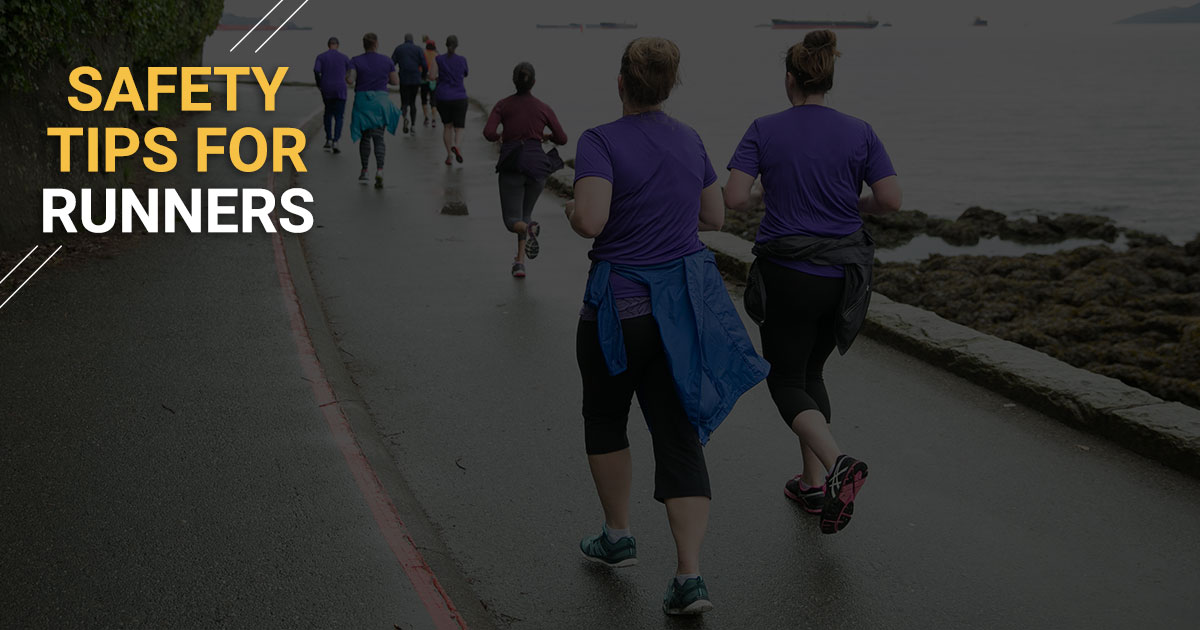
Running safety is of the utmost importance, but sometimes it gets pushed out of people’s minds as thinking about the consequences isn’t appealing. Run-ins with bicycles, cars, dogs, or other people are all things that could have a potential risk associated with them. The best way to eliminate any fear or reluctance while out on a run is to be properly prepared. Follow these simple guidelines for best practices in run safety:
- Know your route. Make sure you’ve planned ahead according to what time of day you’re running at. If there’s a route that’s well-lit and more populated, choose that if you’re heading out in the dark.
- Tell someone where you’re going. Not only is planning your route good practice for your own benefits, but it makes it easier to share with someone else. If you’re planning on heading out on a solo run, inform a friend, significant other, or family member of where you’re going and how long you’ll be. That way, should anything happen they’ll know where to go.
- Be aware. It’s easy to zone out while on a run, especially when we get into a good rhythm. However, it’s important to keep tuned in to your surroundings throughout the entire run and not just when you deem it necessary.
- Avoid headphones. While it’s nice to have the company of some good music or an interesting podcast, running with headphones can eliminate the sounds of the things around you. It can be difficult to hear an approaching bike, car, person, or even a foul ball from a recreational baseball game if you’re plugged in. If you must have your headphones, leave one ear out.
- Be visible. Don’t assume because you’re wearing a light coloured jacket that people will see you. Instead, make the assumption that no one can see you and dress appropriately. Wear high-vis gear such as reflective vests, headlamps, and other clip on lights so people know exactly where you are.
- Bring your phone. It’s always nice to leave your phone at home and take a break from the incessant buzzing of e-mails, texts and other notifications, but sometimes it’s smarter to bring it with you. You can set it to ‘Do Not Disturb’ so your pocket isn’t constantly making noise, but at least you’ll have it in case of emergencies.
- Carry ID. Heaven forbid something does happen during a run, having a piece of identification can help if you’re injured or in a situation where you need someone else’s help.
- Run with a group. It can be a local running group, a friend, or your dog. When you run with someone it decreases the chance of being targeted as a victim, and provides a helping hand if you get hurt.
- Trust your instincts. Don’t put yourself in a situation where you feel uneasy. If heading into the trails as the sun is setting doesn’t make you feel confident, stick to a well-lit path. If there’s a person that doesn’t look trust-worthy, veer away from them or change direction accordingly.
- Follow the rules. Face oncoming traffic; look both ways before crossing the road; obey traffic signals; and check around you to avoid bumping into an oncoming or passing runner.
- Vary your route. Not only does it keep things fresh for you, mixing up your route can stop recognizable patterns. Be sure to stay in familiar areas and keep in mind where the nearest open stores/businesses are.
- Know basic self-defense. Take some time to learn some basic self-defense moves to properly prepare you for any situation that may occur.







